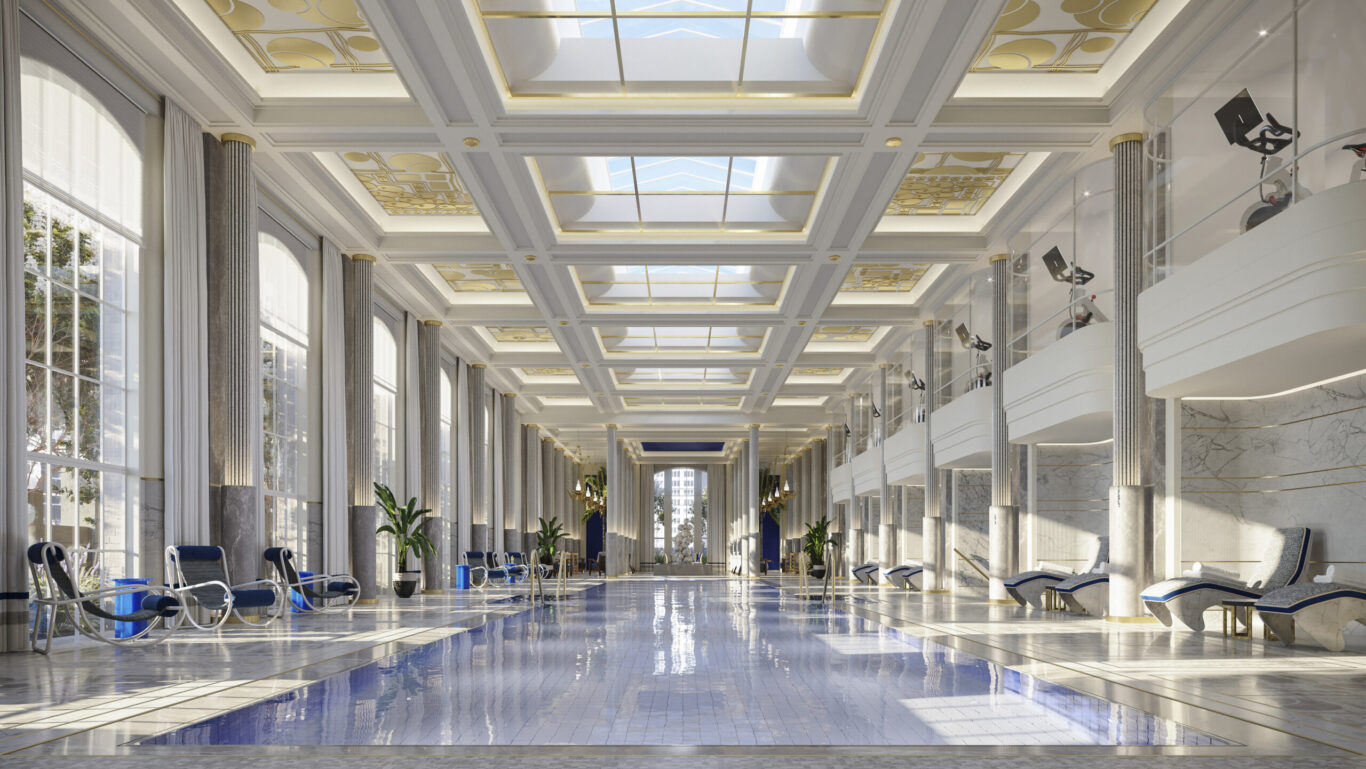Planning the skyscraper hotel’s next century
The standards for American hospitality forever changed when the Waldorf Astoria opened its doors in 1931. Setting a record as the largest hotel in the world, the city’s new “unofficial palace” became an instant centerpiece of New York culture—welcoming celebrities, politicians, royalty, everyday tourists, and New Yorkers alike throughout its ornate lobbies and event venues.

Starting in the 1960s, however, a series of modernization efforts changed the look and feel of the original design by Schultze & Weaver. SOM’s project restores the Waldorf’s former grandeur, while repositioning the hotel for its next life. It is a methodical work of preservation, a meticulous restoration, and a comprehensive transformation that reimagines the 1,400-room hotel into a 372-unit luxury residence and 375-key, five-star hotel. Ninety-six percent of the building has been converted, and for the remaining four percent—a total of 62,000 square feet encompassing the landmarked lobbies, corridors, ballroom, and other event spaces—SOM maintained, and in many cases reclaimed, their historic character and purpose.
Planning the skyscraper hotel’s next century
Deep Dive: Immersed in history
Planning the future of a storied building requires a thorough understanding of both its past and present. SOM delved into the archives of the hotel and the records of The Wolfsonian at Florida International University, which holds the Waldorf’s specifications book, drawings, and renderings, to uncover Schultze & Weaver’s design intent. Working with preservation specialists at Building Conservation Associates, SOM evaluated the building’s condition through forensic investigation, from original details to later alterations—building a baseline for comparison with the original specifications.


As a backdrop to this architectural history, SOM studied the legacy of the Waldorf: as a venue for diplomatic conferences, the site of nearly two dozen Rock & Roll Hall of Fame ceremonies, countless public and private events, and the home and preferred New York hotel for Cole Porter, Frank Sinatra, Ella Fitzgerald, and many others. To enrich that cultural narrative, the project team also gathered personal stories from hotel staff and members of the community.
Altogether, the research presented a complex puzzle: to plan a future that balanced the original design intent, the building’s current condition, and its lived experience.


During this process, the New York City Landmarks Preservation Commission (LPC) considered designating a portion of the Waldorf’s interior as a landmark—adding to its existing status as an individual city landmark. In support of this effort, SOM provided the LPC with its research and analysis, which ultimately helped determine the extent of the interior’s landmarking in 2017. Shortly thereafter, SOM presented its blend of preservation, restoration, and adaptive reuse in a three-hour-long hearing. The design received unanimous LPC approval—a rare accomplishment for a first proposal, especially for a building with such a rich architectural and cultural history.




















